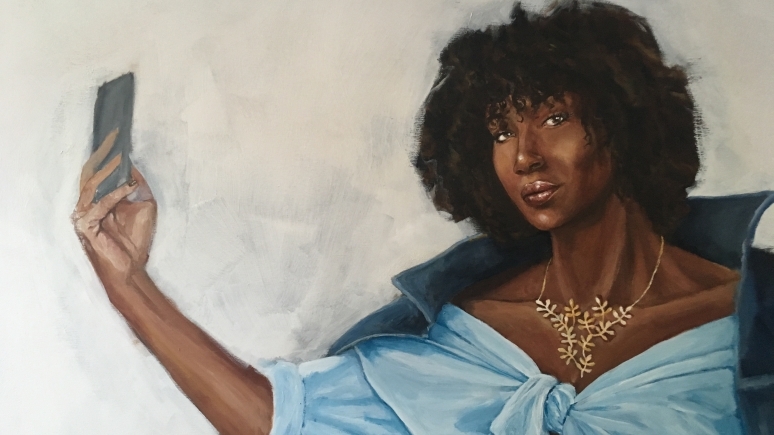Angelica Babiera | Arts Editor
Featured image: “Detail In Conversation” (c) Gordon Shadrach. | Courtesy of the ROM
On January 27, the ROM opened a new exhibition titled Here We Are Here: Black Canadian Contemporary Art. The exhibition brings together nine Canadian contemporary artists to create an exhibition that best represents the deep-rooted histories and presence of black culture in Canada. Here We Are Here explores and challenges the struggles that blacks often face in Canadian culture.
Josh Basseches, the ROM’s Director and CEO, explained: “Here We Are Here: Black Canadian Contemporary Art is an important exhibition that grapples with current and historical interpretations of black culture and identity in this country.
The work represented in this exhibition not only encourages visitors to re-examine their idea of what Canada is, but offers a broader telling of the Canadian story through the black Canadian experience.”
The entire exhibition portrays a certain image that best represents the artists’ black-Canadian experience. Artist Sandra Brewster composed a piece reflecting her parents’ experience as newcomers to Canada. The York alumna’s “Hiking Black Creek” shows a “meditation on the emotional labour of belonging, of connecting with one another and one’s surroundings,” as the ROM explains.
Brewster’s work has been exhibited internationally, and conveys themes of identity and representation. Her work reflects how intersectionality works with immigrants, as well as those who are deemed the minority.
Michele Pearson Clarke’s video installations “Suck Teeth Compositions (After Rashaad Newsome)” is about the everyday oral gesture shared by black people and how the sucking of their teeth often has negative connotations. Clarke tries to break down this stigma and stereotype by normalizing the gesture with the video.
As for Charmaine Lurch’s “Being Belonging and Grace,” her focus comes down to expressing belonging and invisibility. Lurch is another York alumni whose large-scale gestures express emotion and ease; the conflict between trying to belong yet feeling invisible in the community—both in her own black community and the white community.
Meanwhile, Sylvia D. Hamilton, Bushra Junaid, Esmaa Mohamoud, Dawit L. Petros, Gordon Shadrach, and Chantal Gibson’s respective installations all convey a sense of reflecting the history of trade and slavery, stereotypes, and the feelings of being “displaced” and “disappeared’ in Canadian narratives.
While I explored the exhibition, I felt a sense of connection. As a Canadian immigrant, I know what it means to feel out of place; to feel awkward in transitioning into the Canadian standards while still upholding my own cultural beliefs. I have felt the wish to belong, yet still feel invisible in the eyes of my own people and the Canadian people.
Each of the artists’ works are relevant in today’s society and issues. Each create conversations that not many people are aware of. The ROM’s Here We Are Here explores the idea of being black in Canadian society, and helps evoke a powerful response from visitors to challenge the norms and the stigmas that are still prevalent today.


